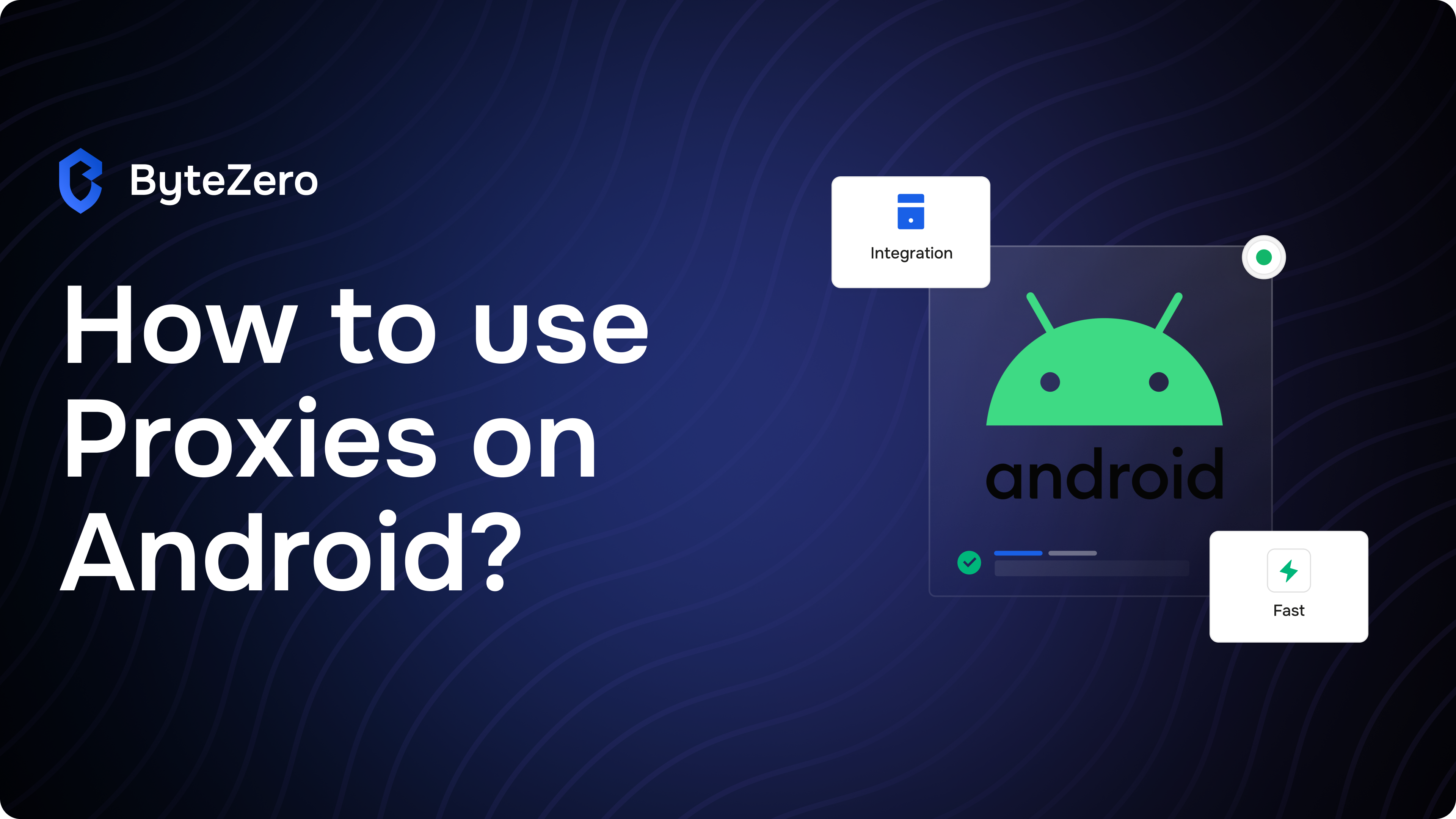How to Use ByteZero Proxies on Android (With or Without Root)
Need to browse anonymously, test geo-targeted content, or rotate IPs directly from your Android device? Good news: ByteZero proxies work perfectly on mobile. Whether your phone is rooted or not, this guide walks you through everything you need to get started.
🔥 Proxies made easy: Use our free Proxy Formatter tool to break down your full proxy string into host, port, username, and password. No guesswork required.
Step 1: Get Your ByteZero Proxy
First, copy your proxy string from the ByteZero dashboard. It looks like this:
This string follows the format:
Instead of copying each value manually, just paste the full string into our formatter. You’ll instantly get everything neatly separated and ready to use.
👉 Use the Proxy Formatter Tool
Popular Apps to Use Proxies on Android
If your goal is full control over mobile traffic or apps that require login-based proxy authentication, these apps are a great match for ByteZero proxies.
- • Wi-Fi Manual Setup (Built-In): Use this for HTTP/HTTPS proxies without authentication. Works well with Firefox or Kiwi Browser.
- • HTTP Injector: Ideal for routing traffic through proxies on a per-app basis. No root required.
- • Drony: Captures traffic from apps and routes it through a proxy. Simple and root-free.
- • Every Proxy: Share proxy access over Wi-Fi or local networks. Lightweight and easy to set up.
- • ProxyDroid: Gives full system proxy control. Requires root access.
- • SocksDroid: A lightweight SOCKS5 client, perfect for developers and power users.
- • Firefox for Android: Works well with Wi-Fi proxy setup and prompts for authentication if needed.
All of these apps let you enter full proxy credentials, making them fully compatible with ByteZero’s residential, ISP, and mobile proxy formats.
For best results, always run your proxy string through the Proxy Formatter Tool before copying it into your app of choice.
Step 2: Set Up Proxy via Wi-Fi Settings (No Root)
This method uses Android’s built-in proxy support over Wi-Fi. It only works for HTTP(S) proxies and doesn’t support authentication directly, so it’s best paired with apps like Firefox that prompt you for login.
- • Open your Android Settings
- • Go to Network & Internet → Wi-Fi
- • Tap your connected network, then tap the edit icon
- • Scroll down and set Proxy to “Manual”
- • Enter your ByteZero proxy host and port
- • Leave username and password blank. You’ll enter them in the app later.
- • Save the connection and reconnect
Firefox or Kiwi Browser are great options here, as they support proxy auth prompts.
Step 3: Use a Proxy App (With Auth Support)
If you want to enter a full proxy with authentication, install one of the following apps:
- • HTTP Injector
- • Drony
- • Every Proxy
- • ProxyDroid (requires root)
- • SocksDroid
These apps allow you to enter your full proxy credentials: host, port, username, and password — a perfect match for ByteZero proxies.
App-Level Proxy Only (No VPN Routing)
ByteZero proxies are designed to work on an app-by-app basis. Android does not support full device-wide proxy routing with authentication unless rooted, and ByteZero does not offer VPN or SSH tunnel support at this time.
The best method is to configure proxies inside supported apps that allow manual input of host, port, username, and password. This gives you flexibility and full control without needing system-level modifications.
Browsers like Firefox and proxy apps like Drony or HTTP Injector make setup fast, secure, and root-free.
Use Country Targeting on Mobile
Targeting specific countries is easy with ByteZero. When generating your proxy in the dashboard, simply select the country you’d like to target from the dropdown — no manual edits required.
If you need to switch locations later, you can also change the country code manually by editing your proxy username. For example:
To switch to Germany or the US, just update country-gb to country-de or country-us. The proxy will route your connection through the selected region instantly — no need to regenerate the entire string.
Final Tips
- • Use browsers that support proxy login prompts (like Firefox)
- • Try HTTP Injector or Drony for app-level proxy control
- • Experiment with different bridge servers for optimal performance
- • Always use the Proxy Formatter to speed up setup and avoid mistakes
Have questions about using ByteZero proxies on Android? Our support team is ready to help. You can also explore more tutorials in our Knowledge Base.
